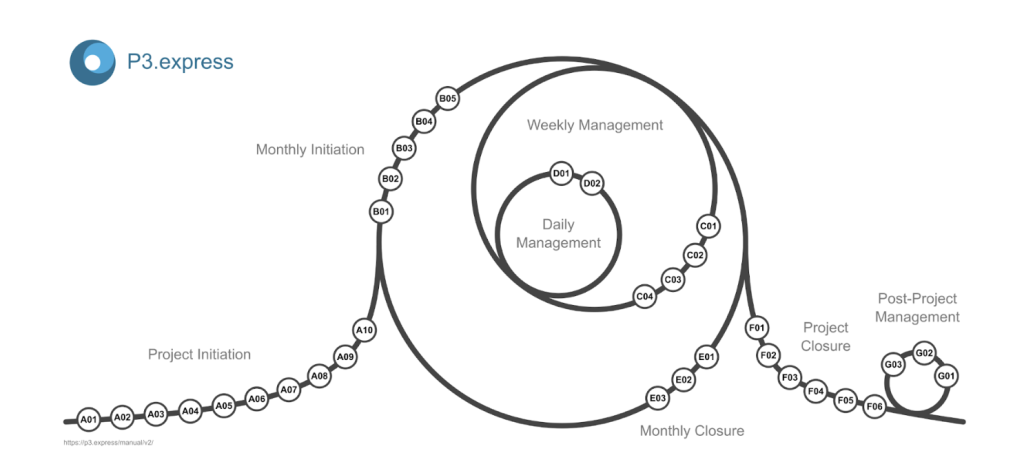Nowadays, we are very familiar with Artificial Intelligence, but not so much with Computer Vision — a very specific branch that provides solutions to complex challenges across multiple sectors, such as industrial, medical, or circular economy, just to name a few.
At Pixelabs, we create visual AI solutions tailored to the real needs of each case. However, for these developments or solutions to generate real value, it is not enough to design algorithms or train models. It is crucial to have a solid organizational foundation for managing these projects. Coordinating teams, aligning objectives among all stakeholders involved, and carefully monitoring project evolution (deadlines, costs, and quality) are fundamental tasks to ensure Computer Vision projects not only work but also generate true value.
What does “project” really mean and what methodologies exist?
Before explaining how we carry out Computer Vision projects, it is important to clarify what we mean by a project. According to the global PMP standard, a project is a temporary effort undertaken to create a unique product, service, or result. This key definition differentiates projects from ongoing operations, as they have a clear beginning and end, specific objectives, and a dedicated team.
When it comes to project management — regardless of the sector or type of project — it is advisable to understand:
- Reference standards such as PMP, based on the best practices published by the Project Management Institute (PMI), which help us normalize processes globally.
- Methodologies, which can vary depending on the approach. For example, Waterfall methodologies follow a traditional and sequential process where the final product is clearly defined. Agile methodologies emphasize flexibility and iterative development (e.g., P3 Express, PM2), where the final solution may not be clear from the start. Hybrid methodologies combine both approaches.
- Frameworks, which provide a set of concepts, practices, and guidelines for addressing different types of challenges or projects. Some of the most popular are Scrum, Kanban, and Lean, widely applied to Agile methodologies.
In the field of Computer Vision, where innovation and new challenges are part of daily work, having a flexible yet structured vision is essential. That’s why, at Pixelabs, while considering standards, methodologies, and frameworks, we adopt our own adaptive methodology tailored to each project type.

Example of a Work Cycle in the P3 Express Methodology
How do we manage our projects?
In general, Computer Vision projects — especially those focused on developing new models or ad hoc solutions — usually follow these phases:
First Steps: The cornerstone of success
This stage is critical, as it involves not just gathering requirements but also understanding, analyzing, and even researching.
It starts with problem analysis and identifying potential solutions. It is essential to define what success means for the project, conduct a thorough technical analysis, and define the scope as accurately as possible — while keeping flexibility in mind for innovation-driven projects. Data evaluation is also crucial at this stage, as incomplete, unorganized, or limited data often represent the first challenges to overcome.
Additionally, this phase should always include, at a minimum: stakeholder identification, risk analysis with mitigation strategies, a deliverables list with timelines, and a monitoring log.
Execution: Guiding development and seeing tangible progress
Here, the project scope and team roles are already defined. The project manager acts as a guide and coordinator, ensuring smooth progress until the final delivery. Key activities include:
- Daily follow-ups (short meetings to coordinate tasks, detect issues, and plan the day).
- Weekly reviews (deeper progress checks on sprints or deliverables).
- Monthly meetings (broader discussions with stakeholders to review progress and address challenges).
Throughout this phase, it is essential to ensure quality assurance (QA) in all deliverables.
Closing: Learning, evaluating impact, and exploring future opportunities
This stage, often skipped in organizations, is critical for reflecting on successes, identifying areas for improvement, and consolidating best practices. It also involves evaluating the impact of the solution with clients or sponsors and analyzing possible future developments.
Key aspects to consider in project management — based on our experience
Each project has unique characteristics, but from our experience, some essential factors contribute to successful project management:
A professional and coordinated team: Developing Computer Vision solutions requires a highly skilled team, up-to-date with state-of-the-art technologies, and coordinated through effective project and resource management. At Pixelabs, we work with a multidisciplinary team of experts in computer vision, software development, IT, and technical management, closely aligned with the presales department from the very beginning to ensure well-structured, customer-focused projects.
Brainstorming and peer review sessions: Most of the challenges we tackle involve solving problems that have never been addressed before. To generate a variety of possible solutions, we promote brainstorming sessions and peer reviews, encouraging knowledge exchange and creative feedback among the team.
Defining a scope aligned with requirements: Beyond technical specifications, it is about understanding the problem and ensuring Computer Vision can deliver successful solutions. A realistic and well-defined scope is essential to prevent deviations in time and objectives.
A trusted network of collaborators: Often, our solutions require specialized industrial implementations, specific imaging equipment, or advanced lighting systems. For this reason, having a professional and reliable network of collaborators is crucial to deliver complete and robust solutions.
Adaptability and flexibility: Given the nature of AI developments, adaptability and flexibility are key during Computer Vision projects. Challenges and setbacks are part of the process, and being able to respond efficiently while learning from them is vital.
There are many ways to organize project workflows and numerous aspects to consider. However, one element always prevails: the people who drive the project forward.
References:
Web Ceolevel (¿Estándares, metodologías o marcos de trabajo?) – Link; Web Oficial PMI – Link; Web Oficial PM2 – Link; Web Oficina P3 Express – Link